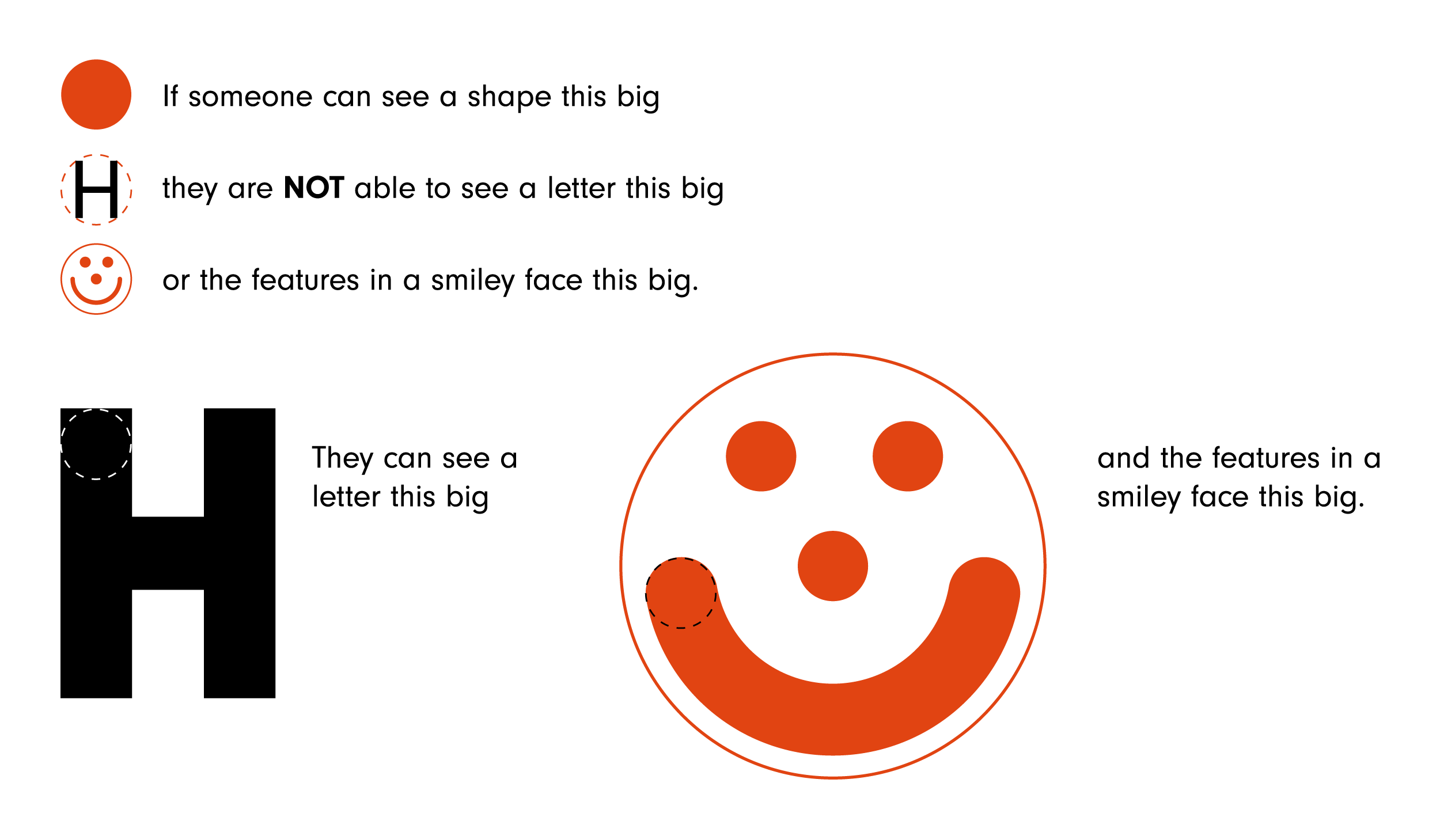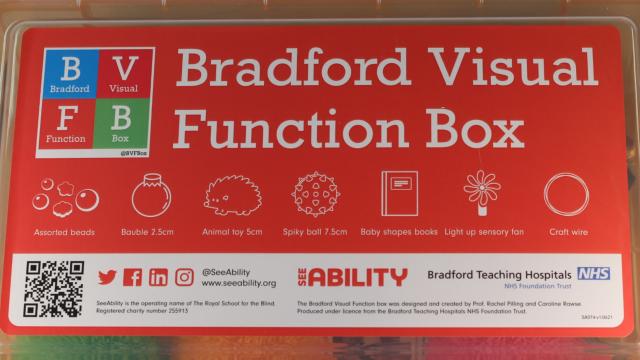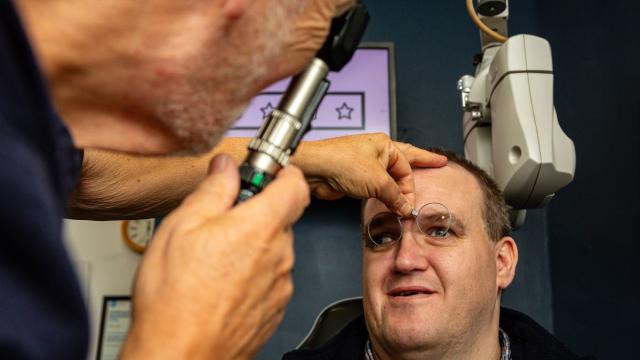The Bradford Visual Function Box
People with learning disabilities are 10 times more likely to have serious sight problems. For children with learning disabilities, that goes up to 28 times. But traditional eye tests can be challenging for people with complex and severe learning disabilities.
For people with mild learning disabilities, reasonable adjustments can be made by using picture or preferential looking tests. But we’ve found that people with moderate to severe learning disabilities find it hard to concentrate on the test or aren’t able to give a response.
Introducing the Bradford Visual Function Box
To tackle the problem and make sure all people with learning disabilities can have an eye test, we’ve worked with eye care professionals Professor Rachel Pilling and Caroline Rawse to create the Bradford Visual Function Box. The box is a functional vision assessment tool to test the vision of people with complex and multiple disabilities.
"Deceptively simple, brilliantly innovative, changing lives."
John Holden, Director of Strategy & Deputy CEO at Bradford Teaching Hospitals NHS Foundation Trust
The Bradford Visual Function Box includes a selection of small toys, black and white books, and beads varying in size and colour, which are presented to the person and the response observed. It’s an innovative approach that means someone doesn’t need to be able to actively engage or communicate, but their eyesight can still be tested.
Eye care professionals can use the Bradford Visual Function Box results to explain what the person is able to see around them, which allows parents and support staff to instantly “see what they see”. It means that families, support teams, medical professionals and teachers are all able to have a clear understanding of someone’s vision to support them in the best way for them.
Read the research behind the Bradford Visual Function Box.
How to buy the Bradford Visual Function Box
Boxes are £80 each, plus VAT and postage. To place an order for the box please email BradfordBox@seeability.org and our team will contact you directly.
Download your guide to using the Bradford Visual Function Box
Top tips for success
How do I know if the person has seen the object?
There are lots of ways someone might show us they have seen something, for example:
- Blinking as the fan approaches
- Turning their eye or head either towards or away from the object
- Eyes moving in / accommodation / pupil constriction
- ‘Stilling’ (stopping moving, humming, rocking, etc.)
- Reaching out for the object
- Smiling or vocalising
Things to remember!
- Think about how long it takes someone to ‘spot’ the object – it’s important for people to know that they need to be patient. Think ‘wait for 8!’
- Notice if there’s a difference in time to find the object on one side compared to the other, or if they find it difficult to spot something below their shoulder height.
- Sometimes people will turn their head to an odd angle to ‘find’ the object – make sure to note this down to help families, teachers or support staff know which side to approach them from. It can help people to understand that the person isn’t turning away, they are trying to see!
- Try holding an object completely still, and then gently moving it – do they find it easier to find static or moving objects?
- Watch carefully if they reach for the object – do they keep looking at it all the way, or do they move their eyes or head away as the reach for it?
- And finally – don’t forget that the small objects show us the size each PART of an object needs to be for someone to see it. If they can see the 3cm bauble, that doesn’t mean they can see pictures that are 3cm, it means that the outline of each part of a picture, letter or number needs to be that big.

The reliability and success of the Bradford Visual Function Box has been tested within a clinical study and published in the British Journal of Ophthalmology.



